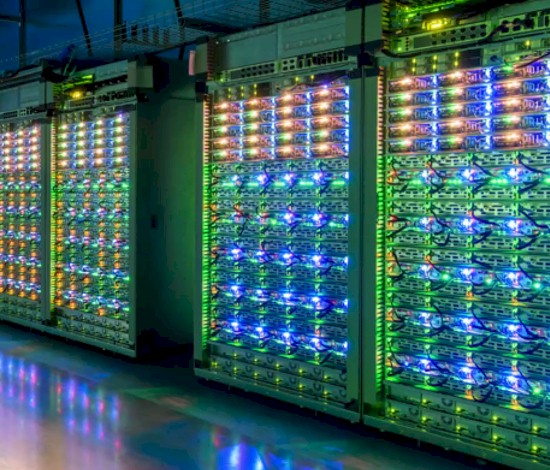Explore the Mathematics of Observer-Dependent Reality
Shannon entropy measures the uncertainty or information content in a probability distribution. It's fundamental to information theory and appears across physics, consciousness theories, and social dynamics.
Formula:
$$H(X) = -\sum_{i=1}^{n} p_i \log_2 p_i$$
where \(p_i\) is the probability of outcome \(i\)
Interactive Visualization:
KL divergence measures how one probability distribution differs from another. It's crucial for understanding how observers' models differ from reality and appears in the Free Energy Principle.
Formula:
$$D_{KL}(P||Q) = \sum_{i} P(i) \log\frac{P(i)}{Q(i)}$$
Measures the divergence of distribution \(Q\) from \(P\)
Interactive Visualization:
Distribution Shift: 0.5
Distribution Spread: 1.0
Semantic embeddings map concepts to vectors in high-dimensional space. Cosine similarity measures the directional alignment between concepts, quantifying conceptual distance.
Cosine Similarity:
$$\cos(\theta) = \frac{A \cdot B}{||A|| \times ||B||} = \frac{\sum A_i B_i}{\sqrt{\sum A_i^2} \times \sqrt{\sum B_i^2}}$$
Euclidean Distance:
$$d(A,B) = ||A-B|| = \sqrt{\sum (A_i - B_i)^2}$$
Interactive 2D Embedding Space:
Network clustering creates information bubbles where similar ideas reinforce each other. Modularity and clustering coefficients quantify echo chamber formation.
Clustering Coefficient:
$$C_i = \frac{2T_i}{k_i(k_i-1)}$$
where \(T_i\) = triangles through node \(i\), \(k_i\) = node degree
Modularity:
$$Q = \frac{1}{2m}\sum_{ij}\left[A_{ij} - \frac{k_i k_j}{2m}\right]\delta(c_i, c_j)$$
The Free Energy Principle unifies perception, action, and learning as minimization of surprise. It bridges quantum mechanics, neural dynamics, and social cognition.
Free Energy:
$$F = E_q[\ln q(x) - \ln p(x,o)]$$
Decomposition:
$$F = D_{KL}[q(x)||p(x|o)] - \ln p(o)$$ $$F = \text{Complexity} - \text{Accuracy}$$
Accuracy-Complexity Trade-off:
Fundamental limits on observer knowledge encoded in quantum mechanics. Certain observables cannot be simultaneously known with arbitrary precision.
Position-Momentum Uncertainty:
$$\Delta x \Delta p \geq \frac{\hbar}{2}$$
Energy-Time Uncertainty:
$$\Delta E \Delta t \geq \frac{\hbar}{2}$$
where \(\hbar = 1.054 \times 10^{-34}\) J·s
Uncertainty Visualization:
Position Uncertainty (Δx): 1.0
Wolfram's ruliad contains all possible computations. Different observers sample different paths through this computational space. Computational boundedness forces observers to perform "equivalencing" - creating observer-dependent reality slices.
Ruliad Definition:
$$\mathcal{R} = \{U_r \mid r \in \mathcal{R}\}$$
where \(\mathcal{R}\) is all possible computational rules and \(U_r\) is the universe generated by rule set \(r\)
Observer Equivalencing:
Computationally bounded observers map many microscale states → fewer macroscale states
Interactive Multiway Graph:
Branching Factor: 3
Depth: 3
IIT proposes that consciousness is identical to integrated information (Φ). A system is conscious to the degree that it integrates information beyond its parts. Φ measures how much a system constrains its own past and future states.
Intrinsic Information:
$$ii(m,z) = \pi(z|m) \times \log_2\frac{\pi(z|m)}{\pi(z)}$$
Integrated Information:
$$\phi_s(s,\theta) = \min[\phi_c(s,s'_c,\theta), \phi_e(s,s'_e,\theta)]$$
where \(\phi_c\) and \(\phi_e\) measure cause and effect integrated information
System Connectivity & Φ:
Connection Density: 0.5
System Size: 5
Before measurement, quantum systems exist in superposition of states. Measurement "collapses" the wavefunction to a definite state. This demonstrates radical observer-dependence: the act of observation fundamentally changes reality.
Superposition State:
$$|\psi\rangle = \alpha|0\rangle + \beta|1\rangle$$
where \(|\alpha|^2 + |\beta|^2 = 1\)
Measurement Probability:
$$P(j|\rho) = \text{Tr}(\rho \Pi_j)$$
Born rule: probability from trace with projection operator
Animated Wavefunction Collapse:
Alpha Amplitude (|0⟩): 0.7
Semantic embeddings enable quantitative measurement of conceptual incommensurability. Different worldviews occupy distant regions in embedding space, making translation between paradigms computationally difficult. This formalizes Kuhn's philosophical insights.
Mahalanobis Distance:
$$d^2(x,y) = (x-y)^T A (x-y)$$
where \(A\) captures semantic-change-aware dimensional weighting
Worldview as Low-Entropy Prior:
$$\Delta H = H(\text{all hypotheses}) - H(\text{constrained by worldview})$$
.png)




